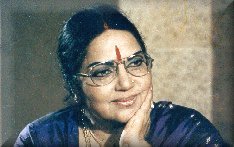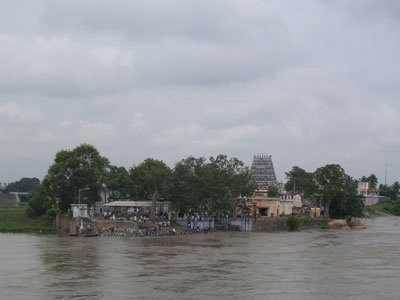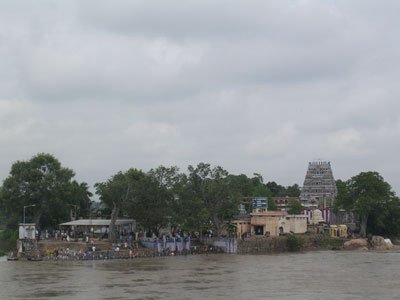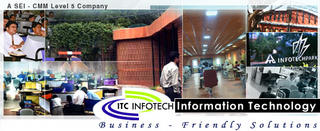Q: Mr. Prime Minister, what are your aspirations for the country, and what progress do you think India has made? What are your priorities?
Manmohan Singh: The first and foremost priority is to finish the unfinished task which the founding fathers of our republic set out for us at the time of our independence: to get rid of chronic poverty, ignorance, and disease, which have afflicted millions and millions of our people. Great progress has been made. Particularly in the last 20 years, the India economy has done quite well, social indicators and development have improved, but we are not quite where we ought to be. The next 5 to 10 years are crucial for moving forward in areas to stimulate economic growth and also to ensure that this accelerated economic growth really benefits the poorest segments of our society. We need a growth rate of about 7 to 8 percent per annum, sustained over a period of the next 10 to 15 years. We need to underpin that growth by strong performance of our agriculture, strong performance of our physical and our social infrastructure. These are our key priorities.
Q: As we talk with our clients, the first question they ask about is infrastructure. Has India made enough progress?
Manmohan Singh: We have a lot of backlog in improving our infrastructure. We have made substantial progress. Work is in place to ensure that our road system is modernized. But our railway system also requires massive investments. We are working with the Japanese government to draw up a program in which the freight corridors between Mumbai1–Delhi, Mumbai–Chennai,2 and Delhi–Kolkata3 can be modernized. Our estimate is that that will cost about 25 thousand crore of rupees [$5.7 billion], and that's our high priority as far as the railway system is concerned. We need to modernize our airports in a big way. Already plans are under way to modernize and expand the airport facilities in Delhi, Mumbai, Hyderabad, and Bangalore. We also are now in the process of modernizing our seaports. Privatization, public-private partnerships, and new initiatives have been tried.
My own estimate is that we need an investment of about $150 billion in the next seven to eight years to realize our ambition to provide our country with an infrastructure which is equal to the economic and social challenges that we face. I'm not saying that everything is in place, but I think that in the last year that our government has been in office we have set in motion the processes through innovative public-private partnerships to explore new pathways to make the infrastructure ambitions a realizable goal.
Q: You started the reform process in the early '90s, and it's had some ups and downs. One item in that agenda was privatization. I wonder where that stands in your priorities and how you see that moving forward?
Manmohan Singh: We are a coalition government, and that limits our options in some ways. Privatization happens to be one such area. As somebody said, a politician before he can become a statesman has to remain in office long enough. So we have to make those compromises. As far as profitable public enterprises are concerned, especially those which are doing exceedingly well, we don't see that they have to be privatized. But these enterprises, if they want to raise resources for their own expansion, they are free to go to the market. The Common Minimum Program,4 which is the benchmark for us to assess where we want to go, talks about the navratnas.5 These navratnas are companies essentially in the oil sectors, the power sectors, which are doing really well and, other than going to the market to raise funds for their own expansion, our options are limited by what is stated in the Common Minimum Program.
But outside the navratnas, as I see it, the field is vastly open. For enterprises which are not navratnas, if we want to privatize, if we want to get more investment going into those things, I think all options are open. But I must confess to you that in the prevailing milieu, the thinking in our coalition is that for enterprises that are doing well under competitive conditions, we must have special justification to prove to our coalition colleagues that there is need for privatization.
Q: Are you happy with the pace of foreign direct investment? And, specifically, how do you feel about foreign direct investment in retail?
Manmohan Singh: I do believe that India needs a lot more foreign direct investment than we've got, and we should have the ambition to move in the same league many other countries in our neighborhood are moving. We may not be able to reach where the Chinese are today, but there is no reason why we should not think big about the role of foreign direct investment, particularly in the areas relating to infrastructure, where our needs for investment are very large. We need new initiatives, management skills, and I do believe that direct foreign investment can play a very important role.
With regard to retail trade, I am convinced that we can work out a package that is fair, that entry of foreign enterprises into the retail trade will not hurt our small shopkeepers but will create a lot more employment. We have to carry conviction with our political colleagues. I am confident that over a period of time we can do that. But for the time being, I have my task cut out to carry conviction with our political colleagues that this is a way to move our economy to a higher growth path—to create new employment opportunities—that this is not a strategy to hurt the small shopkeepers in our country. So I have my task cut out. In the next four or five months, I propose to engage myself in this task.
Q: The reform process must also incorporate labor reform. I wonder how you feel about that, especially since labor has to be retrained and redirected in many ways for the economy to become more productive.
Manmohan Singh: First of all, we must make a distinction. When we talk about labor reforms, we are essentially talking about 10 percent of our labor force, which is accounted for in the so-called organized sector.7 Outside this 10 percent, for the 90 percent we are a completely flexible labor market. The normal laws of the market take precedence. Even within this organized sector, the problem is most acute in the public sector. In the private sector, most people tell me that they can find ways and means of working out voluntary agreements with the trade unions, whereby necessary labor flexibility can be introduced. In the public sector, we have rigid laws, and therefore there is this problem.
New enterprises, particularly if they are foreign-backed enterprises, do ask this question. And it is a legitimate question. We cannot move straightaway to the Western or the American model of hire and fire, quite frankly. I don't see that there is today a climate of opinion which will go to that extreme. We have to look at the Southeast Asian example, and probably the Japanese. The Japanese for a long period had a different labor-management system.
So we have a problem, there is no doubt. Extreme rigidities in the labor market, inflexibility of the labor market, is not consistent in our achieving our goals in a world where demand conditions are changing so fast, technological conditions are changing so fast. But there are limitations for the time being. We don't have a broad-based consensus in our coalition for me to assert that I can move forward in a big way. But I do recognize that we should take credible action. Our colleagues who are in government in West Bengal . . . do appreciate the need for labor market flexibility. It is my task to carry conviction to our Left colleagues in Delhi. I haven't given up, and I am confident that when all things are considered I think the reform will have more broad-based support. Our coalition today represents nearly 70 percent of the Indian electorate, so we may be slow moving, but if we build a consensus, that will be far more durable than any other mechanism that I know of.
Q: That is encouraging about the West Bengal government. I understand that it is progressive on many labor issues, even though it is a Communist government.
Manmohan Singh: Even in areas of privatizations they are moving, and moving forward. Our role is to convince their national leadership that what is good for West Bengal can also be good for the rest of the country. I haven't given up hope. I have full confidence in the patriotism of our Left colleagues to believe that in the final analysis of what is good for India, they will also be on board.
Q: How will the government generate employment, particularly in light of making sure there are enough jobs for the youth coming into the workforce?
Manmohan Singh: Jobs have to be created in all sectors of our economy. Agriculture still accounts for 60 percent of our labor force, and I believe that we will need a second green revolution to increase production and productivity, and in the process, I hope, we will create more jobs. But essentially over a period of time, our salvation lies in getting people to move out of agriculture. Services today account for 50 percent of our GDP. There are lots of people who tell me that services cannot move far ahead of what's happening in manufacturing, and that worries me—this imbalance. I feel we have to do a lot more on manufacturing because, ultimately, services respond to what's happening in the production sector.
So outside agriculture, in manufacturing and services, we must create a lot more jobs. But that also means that we must ensure that our systems of general education and technical education are in line with the job requirements that a more modern manufacturing and a more modern services sector would require. We have to walk on two legs. We have to create conditions in which manufacturing and services—the economy outside agriculture—move and move fast enough. And at the same time the working force that is available must have skills which will fit the kind of jobs which will be in demand.
Q: What is the government doing to promote India as a manufacturing base, especially agribusiness and food processing, which must be important?
Manmohan Singh: Agribusiness and food processing are important parts of modernizing our economy, of modernizing our agriculture and moving into a phase where a more modernized agriculture helps not only farmers but also helps consumers. Now, I've talked to a large number of producers—people from Hindustan Lever and others—and they've been telling me what India needs most is a unified food law.8 We have just now prepared the bill, and it will be introduced in parliament. The other thing to move forward on this front is that we must have electricity in our rural areas, we must have cold-storage facilities. We have, for the next four to five years, a very ambitious plan to expand . . . the availability of electricity to all of our villages. I hope that that should bring about a new revolution in the handling of agribusiness.
Q: We've seen uncontrolled urbanization in many parts of the world, which really does not improve the standard of living. What is the plan to promote truly effective, productive urbanization as, by necessity, the rural population moves toward the urban centers?
Manmohan Singh: This has to be a fairly controlled operation. The premature migration of very large numbers of people from rural areas to urban areas can give rise to a lot of strains to the urban infrastructure, which can also create problems of crime—law-and-order problems. But we have to recognize that [urbanization] is the inevitable outcome of the processes of growth and the processes of modernization.
Our urban areas need a lot more attention in terms of investment. In my Independence Day speech yesterday,9 I pointed out that already about 30 percent of India's population lives in cities. In states like Maharashtra,10 40 to 45 percent of the population is in urban areas. I expect over the next 10 to 15 years that we will move to a situation where about 50 percent of our population will be in urban areas. We need new strategies to look at urban transportation systems, urban management of solid wastes, new sewerage systems.
This itself would require Herculean efforts of investment, but I don't believe that resources will be a constraint. Our statisticians now tell me that our savings rate has shot up in the last couple of years to about 27 to 28 percent of our GDP. And also we are a country where the proportion of young people to total population is increasing. All demographers tell me that if we can find productive jobs for this young labor force, that itself should bring about a significant increase in India's savings rate in the next five to ten years. If our savings rate goes up, let us say, in the next ten years, by 5 percent of GDP, we would have generated the resources for investment in the management of this new urban infrastructure that we need in order to make a success of our attempt at modernization and growth.
Q: What is India doing to make sure that its economic success continues, by building on both the primary-education system and the higher-education system? Related to that is health. The government spends very little on health and health infrastructure.
Manmohan Singh: You are right. As a nation, we should be doing more in both health and education. But our total expenditure on health, public and private, does not compare unfavorably with other Southeast Asian countries—about 6 percent of GDP. But the mix between the public and private spending is excessively in favor of private spending. Our public expenditure on health is less than 1 percent of GDP. There are neglected areas where the public sector has a major responsibility: for primary health care, rural health care. Our ambition, which we have set out in our Common Minimum Program, is for the next four or five years to raise the public spending on health as a proportion of GDP to at least 2 percent.
With regard to education, I think at the top we have an excellent superstructure. The IIMs and IITs,11 the regional engineering colleges, they have served us well. But ultimately, if the educational pyramid is not right there are limits to getting dividends. Therefore we are making, for the first time, the most determined effort to ensure that all our children—particularly children coming from disadvantaged families, particularly the girl child—in the next four or five years have the benefit of minimum primary schooling. But that will generate demand for upgrading the quality of our secondary schools. We have not given that much attention toward upgrading our secondary-school system, and that is our next step. After what we have done in the last one year, primary education is well looked after. What we have now in place is a system which will ensure that all our children who are of school-going age are in primary school. But the secondary-school system will require a major effort, and it worries me.
'We will attend to that because I believe empowering our people means empowering by investing more in their education and health'
When I look at countries like South Korea, all children who are of secondary-school-going age are in school; our children drop out even before they complete primary school. Therefore, yesterday, in my address to the nation, I laid a great deal of emphasis toward improving the quality of our education, both at the primary level and the secondary level. We will attend to that because I believe empowering our people means empowering by investing more in their education and health.
And as far as the system of higher education and research is concerned, I just appointed, under Sam Pitroda,12 a knowledge commission to look at what needs to be done, where we are, and where we ought to be. In the next one or two years, the knowledge sector will receive our attention to the extent that it deserves. I do recognize that India has to be the center, the hub of activity as far as the knowledge economy is concerned. We don't want to miss the chance.
Q: May I ask a somewhat difficult question? Whenever people discuss India, everyone can talk articulately about the changes that are needed. But in the end, the pace of implementation and actual results often lag behind. There isn't that kind of action bias that you would like to see in the country. Do you agree, and what are you doing to change this?
Manmohan Singh: I think you are right, but one must understand that economic policy and decision making do not function in a political vacuum. It takes a lot of time for us to take basic decisions. And furthermore, because we are a federal set-up, there are a lot of things that the central government does, but there are many things, like getting land, getting water, getting electricity—in all these matters the state government comes in, the local authority comes in. . . . From a political-management point of view, we cannot do without being a federal system, but I do recognize that at times it gives our system the label that it is slow moving. In a world in which technology is changing at such a fast pace, where demand conditions change very fast, we need to look at a more innovative mechanism to cut down on this rigmarole of many tiers of decision-making processes.
I am thinking of identifying areas where we need big thrusts forward. For example, steel is one sector where we are thinking about investing large amounts of money. Our own domestic steelmakers are very bullish in investment in this area. We've got the [South] Koreans involved in building a steel plant of 12 million tons' capacity. Right from the beginning the center and the state governments were working together to ensure that whatever milestones are agreed upon, those milestones were tracked—how they move forward, whether the work proceeds, if there are bottlenecks, to identify those bottlenecks and ensure that those bottlenecks are resolved. For all major projects, this is what I would like to do. It is my intention to set up a mechanism which would bring about a convergence in what the state governments do and what the central government does: a group of dedicated officers to work together to ensure that our three-tiered system of government does not become a bottleneck.
Q: What message would you like to give global managers as they think about India?
Manmohan Singh: If I have any message, it is that it is our ambition to integrate our country into the evolving global economy. We accept the logic of globalization. We recognize that globalization offers us enormous opportunities in the race to leapfrog in development processes. It also obliges us to set in motion processes which would minimize its risks.
I think, overall, India is today on the move. The economic reforms that our salvation lies in—operating an open society, political system, an open economy, economic system—this has widespread support. Fifteen years ago, a Congress government launched this economic-liberalization program, integrating India into the world economy. Since then, three governments have come and gone, but the direction of economic policy has been, year after year, toward more liberalization. The pace may be slow, may not be as quick as some people would want, but the direction is unmistakable. India's future lies in being an open society, an open polity, a functioning democracy respecting all fundamental human freedoms, accepting the rule of law and, at the same time, to emerge as a successful, internationally competitive market economy.
Thanks to McKinsey










































